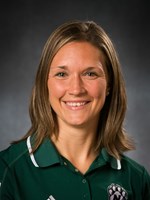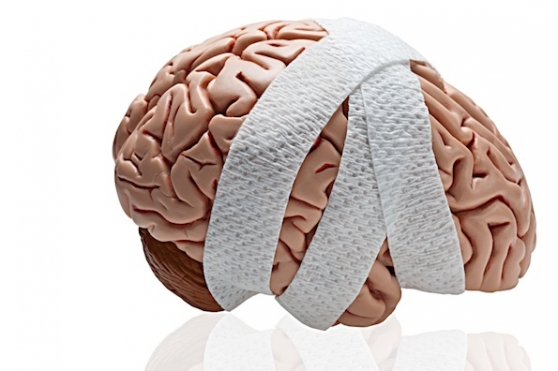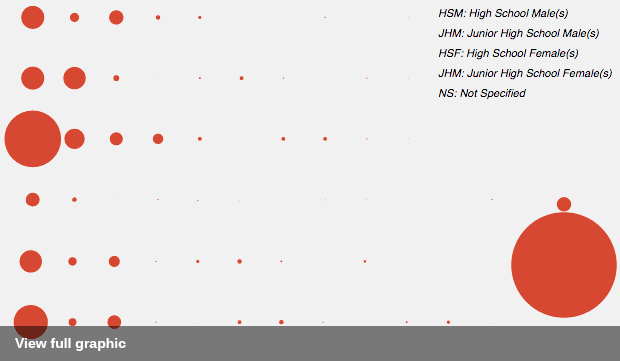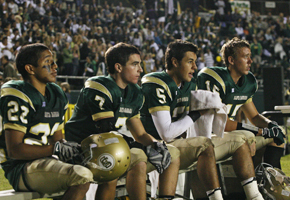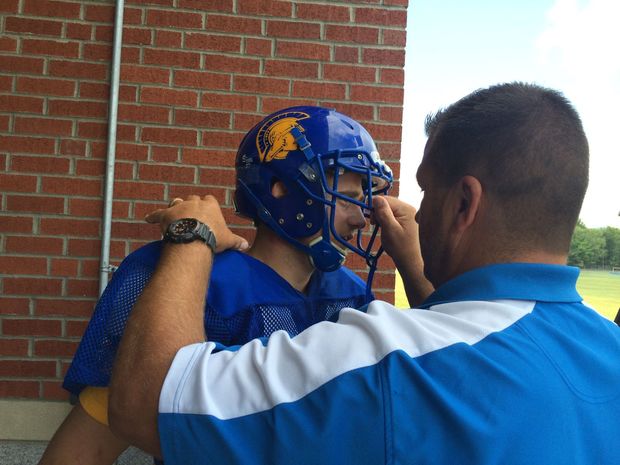
Kris Paton had a similar experience during a Hudson Falls junior varsity game at the end of last season.
Both players suffered concussions — a type of brain injury caused by a blow to the head, or a jolt from a collision with a body. A 2012 National Academy of Sciences study showed high school football players suffer concussions at a rate of 11.2 per 10,000 “athletic exposures,” meaning games and practices.
Symptoms vary, but often include headaches, dizziness, nausea, blurry vision, and confusion or memory problems. Fewer than 10 percent of concussions involve a loss of consciousness, according to the Sports Concussion Institute.
“I finished the drill, but I felt woozy and my head was throbbing, and I felt emotionally out of it,” said Conway, now a sophomore running back for the Spartans.
Conway said he did not miss any school because of his concussion, but he missed almost his entire eighth-grade season of football and suffered from exercise-induced headaches for weeks afterward.
Paton’s symptoms were more severe and longer-lasting, but it was also his second concussion of the season.
“I had headaches a lot; I was dizzy a lot, especially right after it happened, and I got insomnia from it so I had to take medications for that,” said Paton, a sophomore defensive back for Hudson Falls.
However, concussions have not deterred either Conway or Paton from playing football again. Both said they loved the sport and accepted the risk of injury that comes with playing a collision sport.
Assumed risk
The long-term effects of repeated concussions have been a topic of recent debate. Thousands of former NFL players sued the NFL for its handling of concussions and brain trauma over decades.
Participation in football has declined slightly in recent years — the National Federation of State High School Associations website reported nearly 1.1 million students played 11-man football in the 2014-15 school year, down about 10,000 from the year before and down 27,000 from 2008-09.
A recent Associated Press poll found that nearly 50 percent of parents surveyed were not comfortable with their children playing football, but only 5 percent had discouraged them from playing.
According to USA Football, most athletes do recover quickly and fully from concussions. Conway played three sports as a freshman last year, including football, with no ill effects.
Paton has continued to improve, though he said he is “taking it easy” this season. He also said he had to convince his parents to let him play football again this year.
“Yeah, it concerns me, but I still want to play,” Paton said. “I made sure I got a really nice helmet, make sure I don’t lead with my head, don’t make unnecessary hits — be as safe as you can playing football.”
“Football is inherently dangerous; there’s assumed risk,” Hudson Falls head coach Bill Strong said. “We all as coaches cringe a bit and stay up at night worrying about our players or when they get hurt; that side of it is difficult. But I still think the benefits of playing football outweigh the risks — the friendships they make, the leadership they learn, the toughness they acquire, the discipline.”
Increased awareness
Better recognition and identification of concussions has gone a long way toward preventing further exposure to injury.
At one time, not many years ago, a player would have sat out long enough to let the cobwebs clear. Now a player is held out until an athletic trainer or physician trained in concussion diagnosis can administer a sideline test to determine if the player is fit to play.
“If there’s any kid you think has something wrong, we send them to get checked,” Strong said. “We’re here to prepare these kids for the next step in life, not for the NFL or the next game.”
Queensbury athletic trainer Bob Jones is among those trained to recognize concussions, as is the entire Queensbury coaching staff.
“Basically, when it happens, we do the sideline evaluation, we make the decision then of no continuation of play that day if we suspect there’s been some sort of an injury,” Jones said. “If the symptoms worsen, we’ll speak with the doctor or parent; if they resolve themselves, we still speak with the parent regardless. I like to err on the side of caution — go get checked out by your doctor, get another medical professional’s opinion.”
During the course of their recovery, Jones has athletes complete a Cognitive Efficiency Index exam, a computer-based test involving simple colors, shapes, letters and commands that tests memory and reaction time.
Athletes who have had a concussion must be cleared by a physician, then must pass a series of return-to-play protocols before being allowed to resume athletic activity, which usually takes a week.
“Once they’re 3-5 days asymptomatic, we begin the Return to Play protocol,” Jones said. “It’s a six-step return. Sixty or 70 percent of my kids will go one day a level, some will have to go two days.”
Stacy Conway, Patrick’s mother and a teacher at Queensbury, said she felt better about her son resuming football because of the presence of Jones and coaches who understand concussions.
“Part of that comfort is knowing he has the right people looking out for him,” Stacy Conway said. “The coaches and athletic trainer are very aware and cautious of his prior concussion. The health and safety of their athletes is their number one concern.”
Limiting the risks
Improvements in equipment and tackling techniques are part of a movement to limit the risks of concussions.
USA Football started its Heads Up program in 2012 as a way to teach players — starting from youth leagues on up — to keep their head out of tackling and blocking. The comprehensive program also instructs coaches on proper equipment fitting and concussion awareness.
Heads Up tackling and blocking encourages players to never lower their heads during a hit, and using a technique that changes the angle of tackling to a rising blow and wrapping up to bring an opponent to the ground.
“We teach tackling religiously; we do a tackling circuit every day in practice in preseason,” Strong said. “The focus is always on keeping your head up, see what you hit, chest up, hit on the rise, wrap up.”
“We don’t do anything with the head anymore — in the past we always said ‘put your head on the ball.’ We don’t even do that anymore, just to avoid the head,” Cambridge head coach Doug Luke said.
Loaded: 0%
Progress: 0%
0:00
“Our staff utilizes a system of tackling and blocking where the head is not even remotely mentioned as being involved,” Jones said. “It’s all shoulder-based, head up, to the side, shoulder and wrap-up.”
Improvements in helmet technology have produced helmets that can better absorb the shock of a hit, but not completely.
“There’s no such thing as a concussion-proof helmet, but we do have very good equipment,” Jones said.
Jones said the newest helmets they have are from Xenith, the highest-rated helmet on Virginia Tech’s five-star rating system. The Xenith helmets have a free-floating bonnet inside made up of what looks like soft black pucks. Pulling on the chin straps tightens the bonnet around the head.
As a player with a previous concussion, Conway received one of the new Xenith helmets and was impressed with the fit.
“It’s pretty cool how it molds to your head,” he said. “It’s pretty comfortable, it doesn’t seem like it should pop off at all.”
Jones said stronger players are better able to withstand the shocks that cause concussions.
“The thing with concussions is, you could have the best helmet in the world,” Jones said, “but unless the athlete has adequate neck strength to slow down the decelerative forces before they come to an abrupt stop, you’re still going to get a concussion.”
Luke said most of the research into concussions has been done on professional players who have taken a beating for years, and that has scared some people off from playing football.
“I understand people not wanting to play football because of that — I don’t agree with it, but I understand it,” Luke said. “The head is a very sensitive place — that’s why you’re spending hundreds of dollars on a helmet that’s supposed to protect you, and they still don’t do a 100 percent job.”
Changing the culture
As Strong sees it, part of the problem with concussions is within the culture of football itself. It’s a rugged sport that encourages players to be tough and play through pain.
Concussions are difficult to see, unlike a sprain or a fracture, Strong said.
“With the head, trying to diagnose it and having the football players willing to admit that something is hurt is difficult,” Strong said. “The culture of the sport needed to change, and it is, with more of a focus on safety and health.”
Strong said he communicates the dangers of football to parents, but it is sometimes difficult to get a player to admit that they’re hurt.
“You tell parents the truth: football is a dangerous game, and be aware and on top of their son’s health, and if there’s anything wrong, please tell us,” Strong said. “It’s sometimes difficult to get that out of 17-year-old boy who wants to play. But again, it comes back to changing the culture, making it OK to say, ‘Hey, this hurts.’”
Paton said players should keep in mind that a concussion is a serious injury, and to not be in a rush to return.
“Take your time getting healed, because they seem to happen easier after the first one, and they’re not fun at all,” Paton said. “They’re certainly no small deal.”
ORIGINAL ARTICLE:
http://poststar.com/sports/football/high-school-and-prep/preview/limiting-the-risk-of-concussions/article_99a11d9d-f800-5d79-ad7b-193425d0cd03.html

